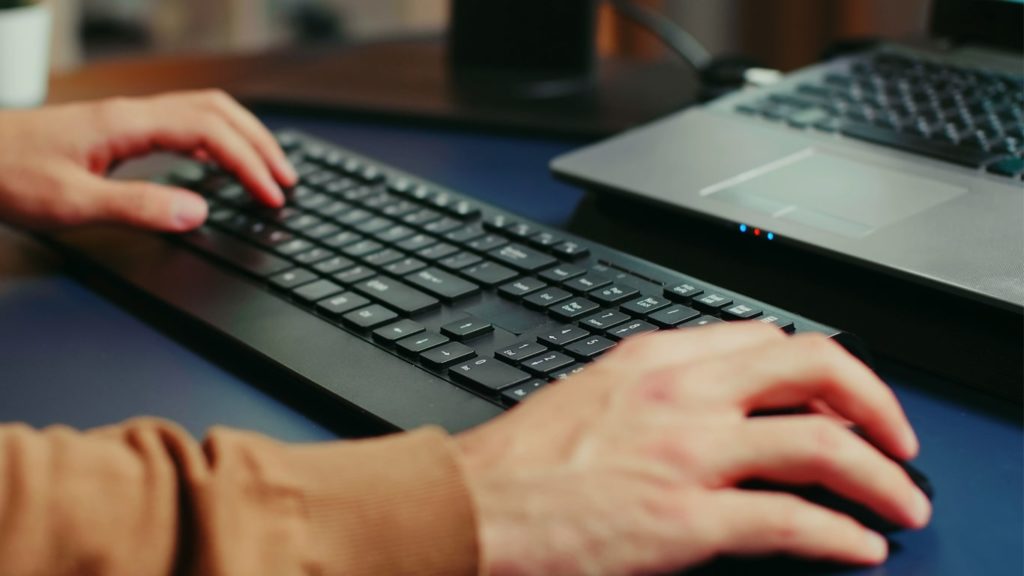
Keyboards were one of the earliest computer-related inventions. The patent for the first typewriter keyboard that resembled today’s products in functionality, specifically the QWERTY key layout, dates to 1868. As usual, its creators didn’t come up with the design concept out of thin air. Instead, they drew inspiration from established products: punch cards, teleprinters, telegraphs, and typewriters. The patented design had 28 keys, used letters of the English alphabet, and looked like a row of piano keys. Since this peripheral device has come a long way in over a century and a half, let’s analyze various types of a keyboard.
| Keyboard Type | Connectivity | Key Mechanism | Power Source | Best For |
|---|---|---|---|---|
| QWERTY Keyboard | Varies (Can be wired or wireless) | Varies (Can be membrane or mechanical) | Varies | Everyday typing in English |
| Membrane Keyboard | Varies (Can be wired or wireless) | Pressure pads | Varies | Quiet environments, budget users |
| Mechanical Keyboard | Varies (Can be wired or wireless) | Individual switches | Varies | Heavy typists, gamers |
| Wired Keyboard (USB/PS2) | Wired (USB or PS2) | Varies (Can be membrane or mechanical) | Direct from computer | Users needing reliability, zero latency, or with older computers |
| Wireless Keyboard | Wireless (Bluetooth or radio receiver) | Varies (Can be membrane or mechanical) | Batteries or charging | Users desiring flexibility and less clutter |
1. QWERTY keyboard
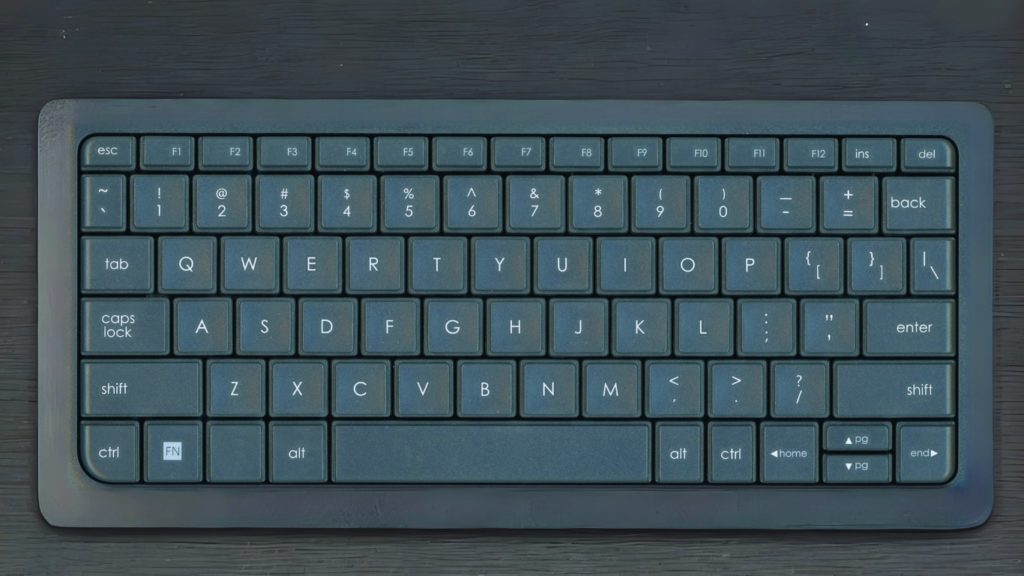
Japanese researchers at Institute for Research in Humanities at Kyoto University released a bulletin paper in 2011 that disputes the official story of how QWERTY came about. But whether the layout sprung from the mind of keyboard inventors or the grueling daily work of typists and telegraph operators is a debate for another day. The fact is, QWERTY is standardized and the most-used layout of keys on a Latin keyboard today.
Therefore, if you’re using an international keyboard, it’s either QWERTY or a Central European version with minimal changes such as QUERTZ or QWERTZU. Don’t be confused because it belongs to another type and can be used for desktop and laptop computers alike. After all, it’s the arrangement of keys that matters.
QWERTY Keyboard Features:
- Common English-language layout.
- The first six letters form “QWERTY”.
- Reduces mechanical failures.
2. Membrane keyboard
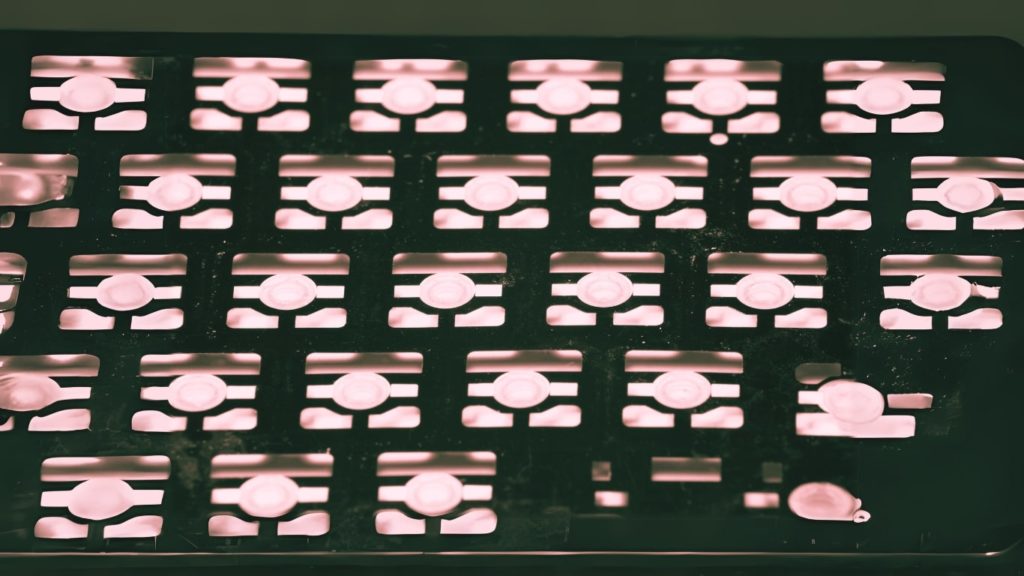
A membrane keyboard uses a rubber or silicon membrane to cushion the keypress. The film consists of 3 layers: the top, “holes” or inner middle, and the bottom layer. Underneath the bottom layer are (usually copper) conductive traces printed on a thin plastic board that acts as an insulator.
This makes using membrane keyboards a silent experience and adds a “mushy” feeling to typing. Because they’re easy to mass-produce, the type of keyboard is frequently the most affordable.
Consequently, these types of a keyboard are lightweight and can be of extremely poor build quality, drastically shortening their lifespan. They’re also fairly hard to clean, especially if debris and dust find their way in.
Additionally, their response time (also known as actuation time) is slow, and not always accurate, since light keypresses may not register. The final nail in the coffin, especially for fast typists and gamers, is the lack of “key rollover” i.e., the ability to register multiple keystrokes at once.
Membrane Keyboard Features:
- Keys are pressure pads.
- Quieter and cheaper.
- Less tactile feedback.
3. Mechanical keyboard
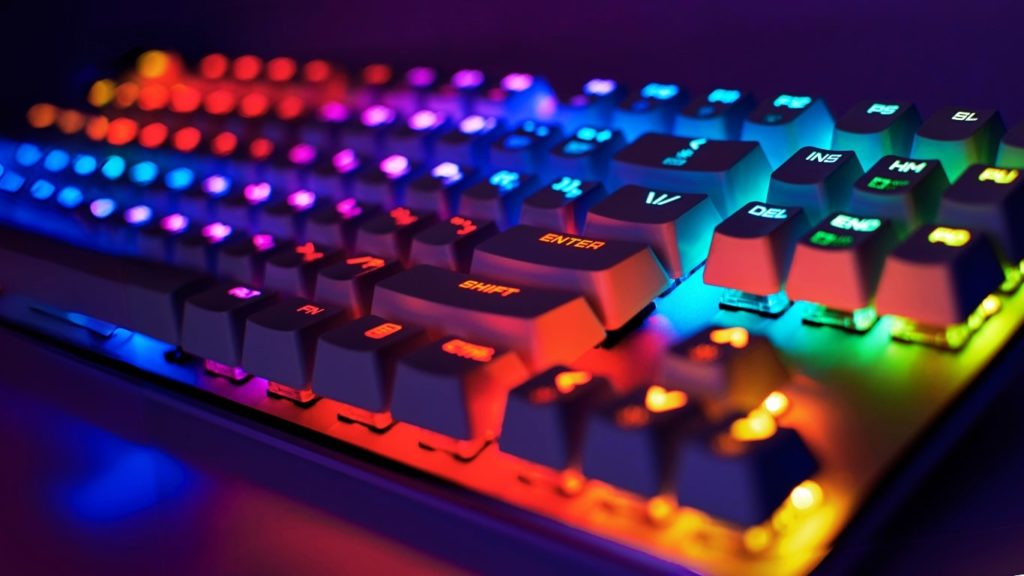
A mechanical keyboard uses a spring-loaded key switch to handle key presses. Press a key, and you’ll trigger a switch that sends a signal through the spring and a stem to register a keystroke. Once tried, you easily recognize the feel of a mechanical switch thereafter.
However, the specifics differ considerably. You see, unlike membrane keyboards, mechanical keyboards let users change the look and feel of every switch. Case in point, there’s an entire market for custom mechanical keyboards optimized by artisans, gamers, and typists. Although they have a variety of names, most mechanical switches fall into these categories:
- Linear – A middle ground between loud and silent, they provide a smooth feeling thanks to ergonomic design. To boost durability, they’re injection molded from PBT (Polybutylene Terephthalate) and have letters ablated by laser rather than printed.
- Tactile – Tactile switches are only perceptible by touch because a bump in the middle provides silent tactile feedback of a barely audible click. Besides PBT, they’re often made from double-shot rubber and ABS, which eases fatigue from typing, both in fingers and ears.
- Clicky – Although clicky switches are tactile by nature, they produce a sound loud enough to let you and everyone in the vicinity know they’re being pressed.
- Speedy – Speedy switches are designed for the lowest possible actuation time i.e., the period between pressing the switch and the keypress registering.
- Low-profile – Users who prefer a slimmer appearance can get low-profile keys. They’re about half the height of standard ones and, thus, have a shorter key travel distance.
- Optical – Among the newest on the market, optical switches use a light beam to achieve remarkably low actuation time. Their precision permits users to set up multiple actuation points for various activities.
These days, mechanical keyboards are primarily used for gaming. You can check out our article on the best gaming keyboards to find some in there.
What else makes them stand out?
One thing you’ll inevitably notice is a high price tag, even with off-the-shelf models, let alone custom or handmade configurations. Mechanical keyboards also tend to weigh more and have a thicker base than membrane ones. We already covered several options regarding the feel, sound, and response time.
What we didn’t mention is how easy it is to clean they are. Most of them come with a keycap puller, and many are splashproof or waterproof. All types of keyboard switches have a long lifespan, often between 50 million and 80 million keystrokes.
The vast majority of mechanical keyboards come with anti-ghosting, a feature that lets them register multiple keystrokes simultaneously. Several higher-end models also offer a Full N-Key Rollover feature, capable of registering all keys pressed once.
Mechanical Keyboard Features:
- Each key has a switch.
- Durable and long-lasting.
- Provides tactile feedback.
- Can be noisy.
- Preferred by typists and gamers.
4. Wired keyboard
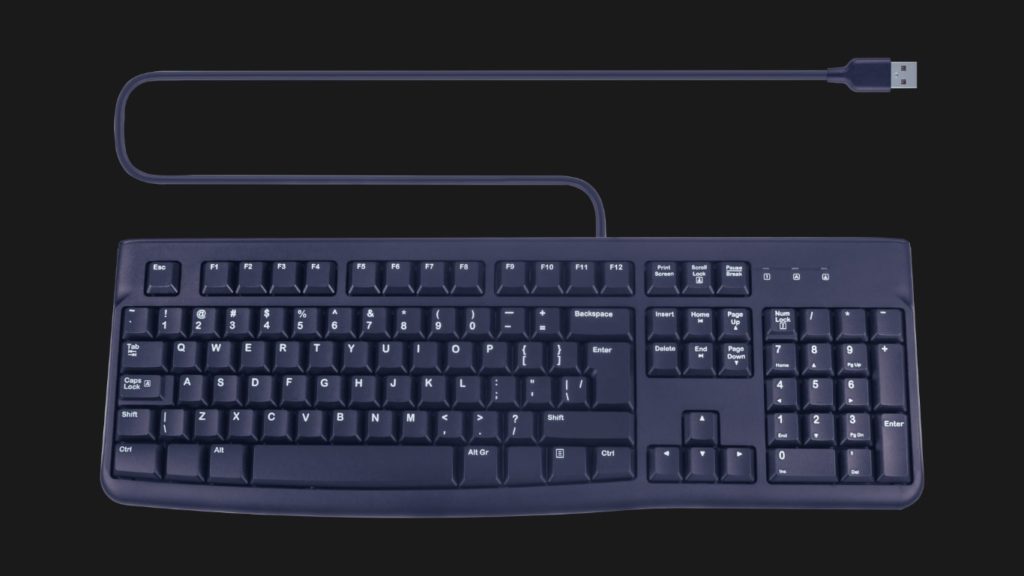
Wired keyboards are among the types of a keyboard that use cables to connect to a device. But they transfer more than data from keypresses; keyboards also rely on this connection for power. Wired keyboards primarily come in these 2 forms:
- PS/2 – One of the earliest wired keyboard ports, today scarcely used on low-end office PCs. It has 6 pins and is color-coded – purple for keyboards, and green for mice.
- USB (Universal Serial Bus) – The most common way of connecting wired keyboards today. Because of low requirements regarding data transfer and power, it rarely demands more than USB 2.0 ports on PCs or USB-C on thinner/low-powered devices such as smartphones, tablets, or laptops.
Wired Keyboard Features:
USB Wired Keyboard:
- Connects via USB.
- No batteries.
- Reliable, no latency.
PS/2 Wired Keyboard:
- Connects to PS/2 port.
- Used with older computers.
- Not hot-swappable.
5. Wireless keyboard
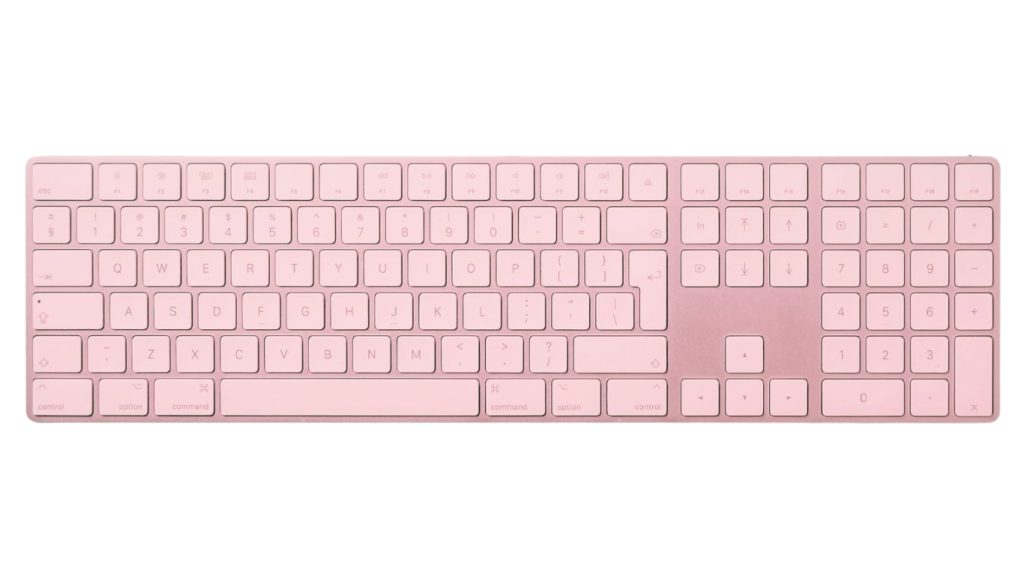
Once again, both mechanical and membrane keyboards can be wireless. Their purpose should be clear to everyone – convenience, portability, and reducing cable clutter. With that said, there are 2 prevalent technologies in use:
Bluetooth
Bluetooth is a technology for transferring data via non-ionizing UHF (Ultra High-Frequency) waves. It’s built into modern smart devices and laptops and can be added to unsupported ones using an inexpensive adapter. Therefore, compatibility and ease-of-use are Bluetooth’s strongest suits, as both sides (the keyboard and the device) must support the technology to communicate.
Radio-frequency or RF
Although Bluetooth is technically a radio-frequency, this term usually refers to 2.4 GHz wireless keyboards that use a radio frequency and a standard that resembles Wi-Fi. In most cases, they come with a USB 2.0 or USB-C dongle that, when inserted into a device’s port, automatically pairs the keyboard.
Wireless Keyboard Features:
- Connects via Bluetooth or radio receiver.
- Reduces desk clutter.
- Requires batteries or charging.
- Risk of signal interference.
- Potential for latency issues.